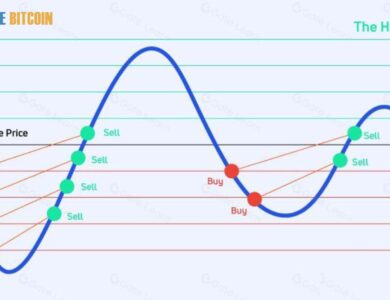
Fundamental Analysis in Forex & Stock Trading Key Economic Data
Fundamental analysis is a trading foundation, particularly in the foreign exchange (Forex) or stock markets. Economic data analysis allows traders to evaluate the general state of an economy, spot market patterns, and project future price movements with greater accuracy. This guide from Octa Broker provides the key components of basic analysis and explains how to use economic data to increase trading profitability.
Fundamental Analysis Overview
Fundamentally, fundamental analysis is the study of the underlying causes, including geopolitical, financial, and economic elements, that propel the value of an asset. Unlike technical research, which concentrates mainly on price patterns and market activity, fundamental analysis is based on facts. Usually, this material comprises central bank policy, company earnings reports, and critical economic statistics. Understanding the more significant economic background helps traders to forecast future market behavior more precisely.
This entails examining government, central bank, and private company-disclosed economic data for Forex traders to understand changes in currency prices. It also entails assessing financial statements, industry trends, and other macroeconomic elements affecting the performance of certain companies for stock traders.
Key Economic Data to Watch
Traders who want to apply fundamental analysis effectively must first become acquainted with the economic data that offers insightful information on the state of a country. These are the most crucial categories of economic data one should keep an eye on:
1. Gross Domestic Product (GDP)
A nation’s GDP is one of the most crucial economic statistics available. It gauges a nation’s total value in products and services generated within a certain period. A rising GDP is usually considered a sign of a healthy, growing economy, which might result in a stronger currency. On the other hand, a declining GDP could indicate a recession and hence a devaluation of the currency.
To evaluate a nation’s economic situation, traders focus on GDP figures. Strong GDP data may suggest good financial conditions and increase demand for a nation’s currency in Forex markets, indicating favorable conditions; negative GDP figures might have the reverse impact.
2. Interest Rates
The main driver of currency values is the central banks’ set interest rates. Usually indicating a better economy, a central bank’s interest rate increase also helps to value the currency. Conversely, as interest rates drop, the currency’s value could weaken as people hunt for better yields elsewhere.
For instance, the dollar can appreciate if the U.S. Federal Reserve hikes interest rates when investors migrate their money into the country to benefit from better rates. Traders forecasting currency movements must first grasp central bank actions and interest rate patterns.
3. Inflation Data
Inflation is the rate at which the general price level of goods and services in an economy rises, compromising buying power. To guarantee economic development and preserve price stability, central banks sometimes set an inflation target—say, 2% annually. Should inflation surpass this aim, stricter monetary policies—including interest rate increases—may follow, strengthening a currency.
On the other hand, low inflation may indicate weak demand and economic stagnation, which would cause more relaxed monetary policies. Using inflation statistics such as the Consumer Price Index (CPI) and Producer Price Index (PPI), traders modify their trading plans in line with the possibility of central bank policy changes.
4. Employment Data
Crucially, employment figures, especially non-farm payrolls and the unemployment rate, are crucial measures of economic health. Usually indicating financial difficulties, a rising unemployment rate points to a developing, robust economy; a declining rate points to a failing one.
Solid employment numbers in Forex markets point to a solid economy, which drives the value of currencies. For instance, as they indicate strong economic foundations, a strong U.S. Non-Farm Payrolls report usually improves the dollar’s value.
5. Retail Sales
Retail sales are an essential measure of consumer expenditure, a significant component of economic activity. As customers are ready to spend money on goods and services, high retail sales usually point to a strong economy. Reduced retail sales can indicate possible economic weakness and a lack of consumer confidence. Traders closely study retail sales statistics to evaluate consumer demand, which directly affects currency and stock markets.
Interpreting Economic Data for Profitable Trading
Understanding how to analyze and act on the crucial economic indicators comes after traders know them. Usually provided at set periods, financial reports reflect the state of affairs; depending on whether the data meets or surpasses expectations, the market’s reaction may change.
If GDP data comes in higher than expected, traders could expect the currency to appreciate and hunt for purchase prospects. Should the results fall short of the predicted, it may indicate a devaluation of the currency, which would cause traders to think about selling.
Economic data is also sometimes published alongside analysts’ expectations or forecasts. Traders have to evaluate the market’s expectations and the actual figures. A far higher-than-expected inflation rate might produce notable market volatility, which offers both possibilities and dangers.
Building a Fundamental Analysis Strategy
Fundamental leaders should create a plan to optimize profitability through basic analysis that includes economic facts in their decision-making process. Here are some critical essentials.
-
Stay informed: Track scheduled economic releases and central bank meetings. Knowing when essential data will be released allows traders to anticipate market movements.
-
Analyze Market Expectations: Understand analysts’ consensus view and how the market expects the data to perform. A surprise result can lead to sharp price movements.
-
Combine with Technical Analysis: While fundamental analysis focuses on economic data, technical analysis can help traders identify optimal entry and exit points based on price patterns and trends.
-
Manage Risk: Economic data releases can cause significant volatility. Ensure that risk management strategies, such as stop-loss orders, are in place to protect your capital.
Conclusion
Fundamental analysis is an excellent instrument for traders trying to have a competitive edge in the market. Using economic data to assess an economy’s state helps traders make better judgments and profit from changes in the market. In the often shifting field of trading, traders can improve their chances of success and profitability by knowing fundamental economic indicators and being able to evaluate them in the framework of more general market trends. Including economic data into your plan can help you to keep ahead of market movements and increase your trading profits.







